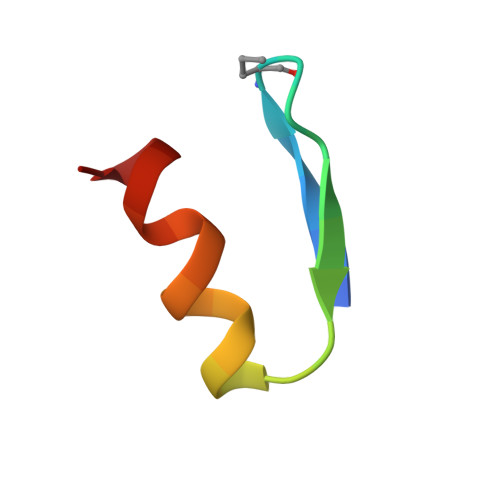Design, synthesis and structure of a zinc finger with an artificial beta-turn.
Viles, J.H., Patel, S.U., Mitchell, J.B., Moody, C.M., Justice, D.E., Uppenbrink, J., Doyle, P.M., Harris, C.J., Sadler, P.J., Thornton, J.M.(1998) J Mol Biol 279: 973-986
- PubMed: 9642075
- DOI: https://doi.org/10.1006/jmbi.1998.1764
- Primary Citation of Related Structures:
1ZNM - PubMed Abstract:
We have incorporated a bicyclic beta-turn mimetic (BTD; beta-turn dipeptide) into a zinc finger, creating a zinc finger with an artificial beta-turn. The designed peptide chelates zinc and has the same fold as the unmodified native zinc finger (finger 3 of the human YY1 protein). A combination of 1H NMR and structure calculations reveals that, in solution, this zinc finger has a fold similar to the known wild-type crystal structure and to other zinc fingers containing the consensus sequence X3-Cys-X4-Cys-X12-His-X3-His-X. The peptide was designed with BTD between the chelating cysteine residues, with BTD forming a type II' beta-turn linking the two strands of a distorted anti-parallel beta-sheet. The C-terminal portion of the peptide forms a helix with zinc co-ordinating histidine residues on successive turns of the helix. This work represents a step towards developing methods by which parts of a target protein may be replaced by peptide mimetics.
Organizational Affiliation:
Department of Chemistry, Birkbeck College, University of London, Gordon House, London, WC1H 0PP, UK.
















